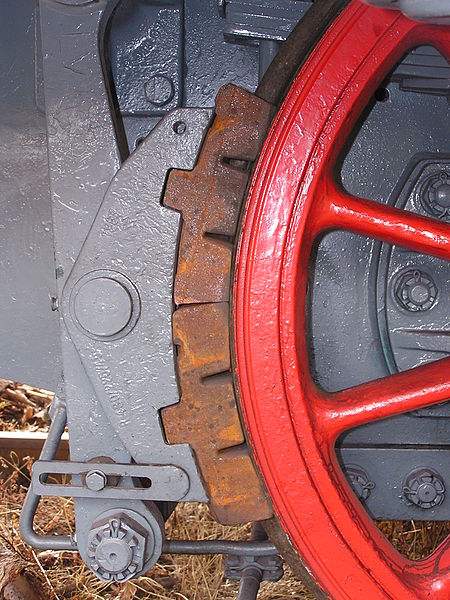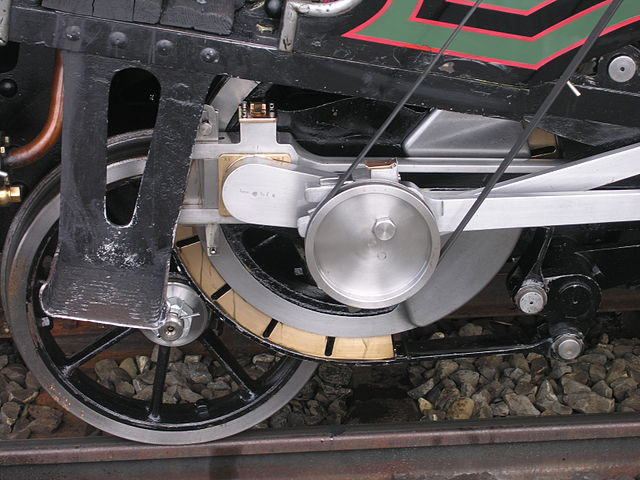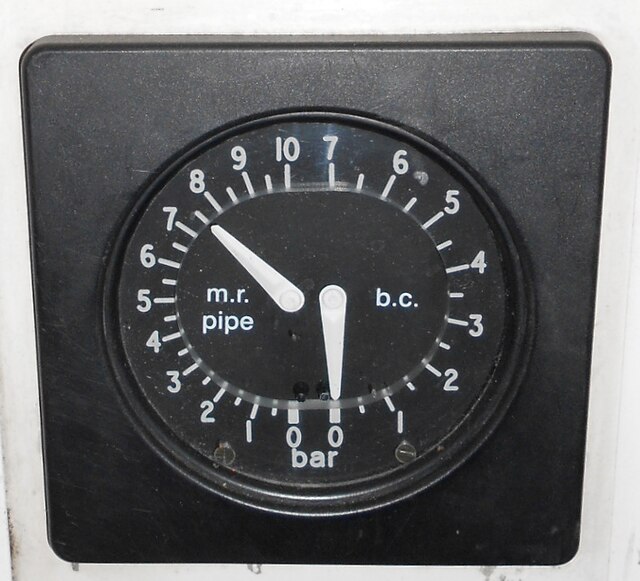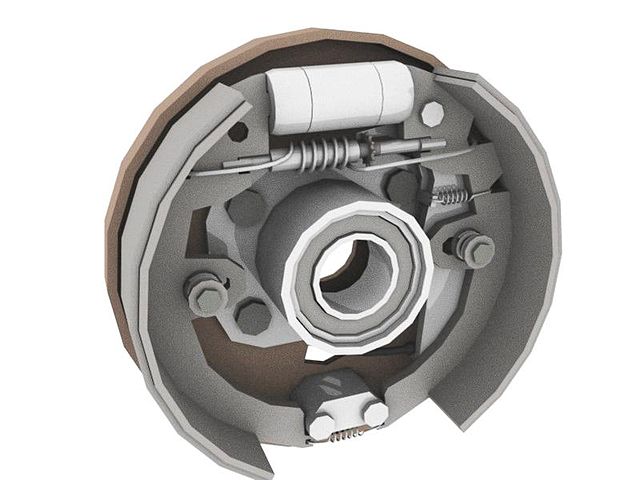A railway brake is a type of brake used on the cars of railway trains to enable deceleration, control acceleration (downhill) or to keep them immobile when parked. While the basic principle is similar to that on road vehicle usage, operational features are more complex because of the need to control multiple linked carriages and to be effective on vehicles left without a prime mover. Clasp brakes are one type of brakes historically used on trains.
A traditional clasp brake: the cast iron brake shoe (brown) is pushed against the running surface (tyre) of the wheel (red), and is operated by the levers (grey) on the left.
A band brake fitted to an 1873 steam locomotive of the Rigi Railways
Controller valve from Rotair Valve Westinghouse Air Brake Company
Driver's duplex air brake gauge: The left needle shows the pressure of the main reservoir pipe supplying the train, the right that of the brake cylinder, in bar.
A brake is a mechanical device that inhibits motion by absorbing energy from a moving system. It is used for slowing or stopping a moving vehicle, wheel, axle, or to prevent its motion, most often accomplished by means of friction.
Disc brake on a motorcycle
Rendering of a drum brake
Single pivot side-pull bicycle caliper brake
Brake booster from a Geo Storm.








